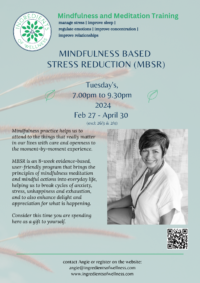Changing Habits

An Autobiography in Five Chapters by Portia Nelson
Chapter I
I walk down the street.
There is a deep hole in the sidewalk.
I fall in.
I am lost … I am helpless.
It isn’t my fault.
It takes me forever to find a way out.Chapter II
I walk down the same street.
There is a deep hole in the sidewalk.
I pretend I don’t see it.
I fall in again.
I can’t believe I am in the same place.
But it isn’t my fault.
It still takes a long time to get out.Chapter III
I walk down the same street.
There is a deep hole in the sidewalk.
I see it is there.
I still fall in … it’s a habit.
My eyes are open.
I know where I am.
It is my fault.
I get out immediately.Chapter IV
I walk down the same street.
There is a deep hole in the sidewalk.
I walk around it.Chapter V
I walk down another street.
Could this be you? Are you so stuck in autopilot that you also miss seeing the deep hole, and fall in? You are not alone, but are you aware of this tendency?
I’ve certainly fallen down many deep holes in my life, but today I am more aware of them and know I have a choice. It can take time, patience and a lot of compassion to work through the chapters, and to change habits that keep taking us down the same street, but change is certain.
Each moment is different
Our habitual autopilot actions, behaviors and thoughts tend to be about things in the past (an argument, a poor result on an exam or assessment, a bad choice). Often they are preparing us for what might happen in the future (planning, rehearsing a difficult conversation with a child, parent or friend, or worrying about something that you have no control over). We are resistant to change, this is true. We like our habits and routines and autopilot is often useful. But what if you keep ending up in the wrong place?
When we pause and pay attention, we might notice that the only thing we can control and understand right now is each moment, the present moment, not the past or the future. In this ‘space’ change is possible. Once we stop pretending that it isn’t our fault and take responsibility to choose the next step, we begin to notice changes with ease and clarity.
In that ‘space’, when we take a pause and pay close attention, with some child-like curiosity, we can see, feel, hear and experience the changes. Change in the quality of your breath; change in the pace of your beating heart; change in the wind blowing on your face; change in the smells that drift by your nostrils; change is everywhere, right now.
Giving teenagers a choice, an alternative
In adolescents, kids are beginning to get caught up in with habitual actions and reactions, and automatic thoughts about themselves and others. Often this creates unnecessary stress and anxiety. Spending a few moments each day paying attention to their experience, the present moment experience, and being with what is happening right now, kids are less likely to succumb to the stress and fall down that the deep hole. They may even “walk down another street”.
Our 10-week mindfulness course for teenagers helps build this self-awareness, allowing them to make intentional choices about the path they take. Participants will learn how to direct attention with intention, they’ll learn about stress and how to deal with it and implement changes that may be needed in that moment, and how to be present with their thoughts and emotions. Mindfulness gives them space, in the short moments of stillness and quiet, to find out about themselves and what they want in their world, what is important to them and their values.
With regular practice, both formally and informally, a little self-compassion and curiosity, we can all do away with our harmful autopilot habits to walk down the street that best suits us.
If you or your teenager is interested in learning about Mindfulness get in touch with me. You can find out more about our programs and the benefits of Mindfulness for young people here, and what other students have shared about their experience.



